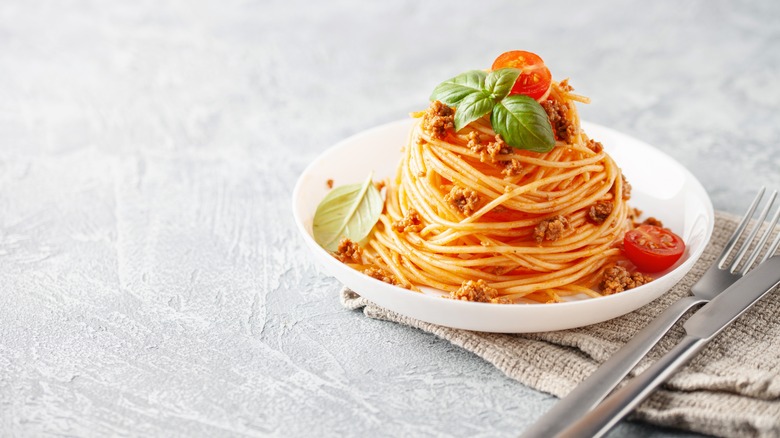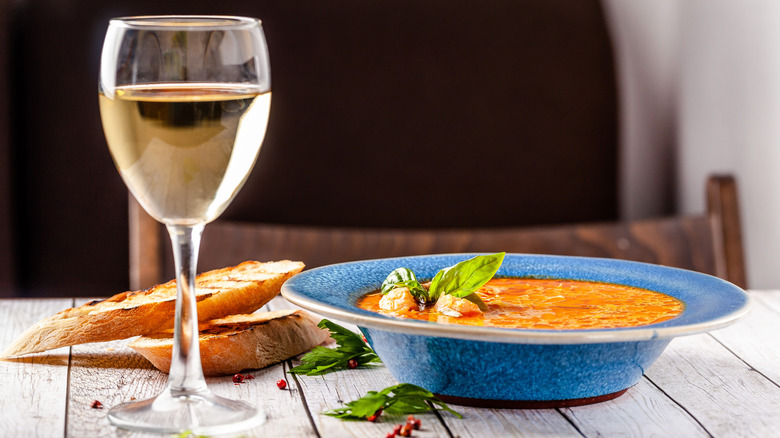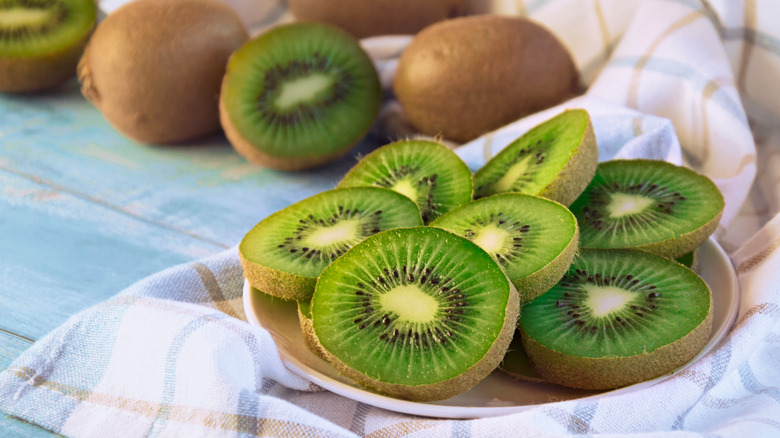A Fine Dining Chef's Expert Tips For Plating Food Like A Pro
When you're serving guests at a dinner party, you should know how to set a formal table, as well as how to present your fabulous meal in an appetizing way. Daily Meal spoke with fine dining expert Ryan Ratino, Executive Chef and Owner of Hive Hospitality (a company that provides consultation services for fine dining), to get some useful tips for plating food like a professional such as himself. Ratino is also the chef-owner of Washington D.C's two-Michelin-starred restaurant Jônt and the one-Michelin-starred Parisian bistro Bresca.
According to Ratino, the first thing you should prioritize when plating food is the color of the plates themselves, and there's one specific color that makes the best foundation for building colorful ingredients. Ratino shared, "For our cuisine we enjoy matte white, low to no gloss. This provides a perfect canvas for our food and the seasons that we are trying to represent."
You may have heard that to serve a great meal, you should make food and drinks that provide a delicious balance of flavor and texture. That balance extends to the colors of your meal's presentation, and colorful ingredients look appetizing when layered on complementary white plates.
Colorful plates are still viable options
Some chefs think serving a fancy meal on colorful plates isn't the best idea; even Ina Garten disapproves. Ryan Ratino holds a similar view about the offerings at his restaurants. However, he does believe that colorful plates can still be useful for your dinner party if that's what you prefer. Ratino explained, "Colorful plates for us can become distracting to the ingredients that we are trying to showcase. But for others it can add so much beauty to what they are trying to achieve."
While tricks for beautifying your dinner party dishes certainly exist, a simple way to make your colorful plates aesthetically harmonious with the food that you're serving is to contrast the color of your plates with the color of your food. For example, you can pour a vibrant orange French tomato soup appetizer into a blue bowl. Spread your bright yellow mac 'n' cheese side dish on a dark green plate, and pile greens on a bright yellow plate. Lay your lightly-colored roasted chicken on a black plate. On top of color considerations, Ratino also has some tips for arranging the food on your plates.
How to layer ingredients on your plate
When your dinner party guests look at the plates of food you're serving, they should be excited by how you've layered the ingredients. The idea is to tease delicious flavor and texture combinations in an appetizing structure. To build those mouthwatering layers, Ryan Ratino suggested, "Work your densest ingredient or technique from the bottom of the plate. This will help keep things light and airy without hurting your garnish work."
Another way of making a visually appealing meal for your dinner guests is using pretty, seasonal ingredients that are also delicious. Ratino explained, "I believe also in embracing the colors of the season you are in, not forcing an ingredient for color that is out of season and letting it water down your flavor." Colorful seasonal spring ingredients include apples, pineapples, and kiwifruit, while seasonal summer ingredients that will add a pop of color to your dinner plates include carrots, cherries, and lemons.


